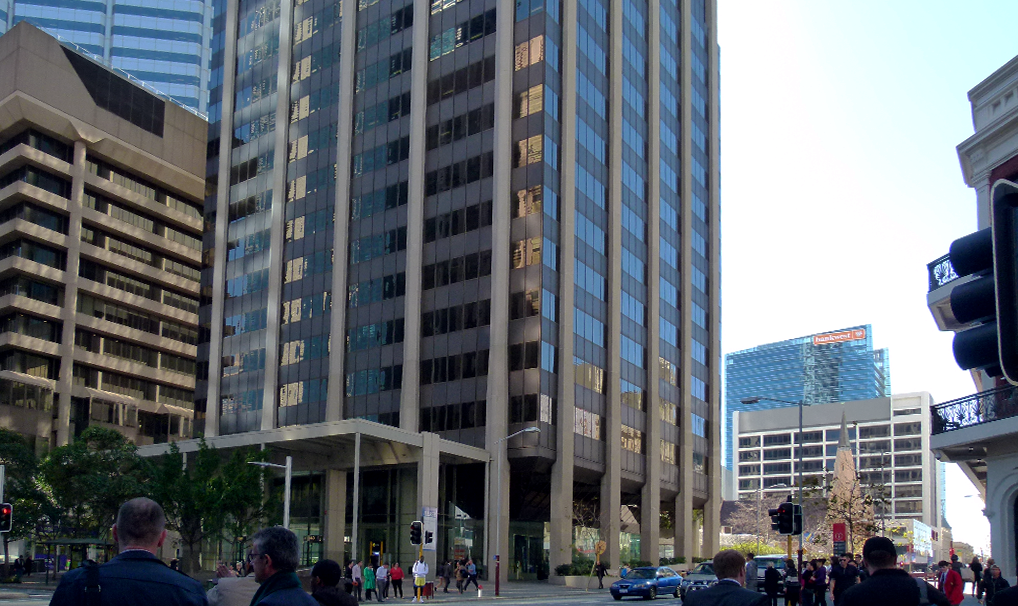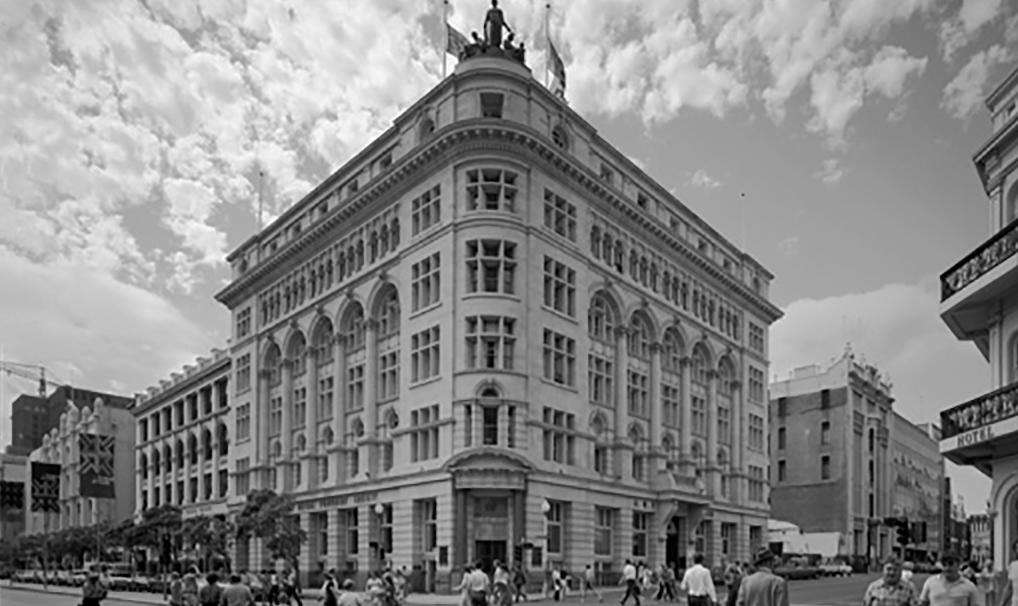AMP CHAMBERS (1915-1972)
AMP Limited bought ‘Carr’s Corner’, at 140 St George’s Terrace, in 1910. In 1915 AMP Chambers was built on it. Designed by well-known Perth architects Charles Lancelot Oldham and Alfred Edward Cox and their firm Oldham & Cox, the six-storey building was designed in the ‘Renaissance Revival’ architectural style. The completed building was clad in limestone and the interior of the building was finished in Western Australian Jarrah.
On the roof of the building stood a 3.7m tall bronze statue by renowned sculptor Pietro Porcelli which portrayed a classic depiction of Eirene the goddess of Peace and Plenty, holding a palm branch (peace) and a cornucopia (plenty). The male god of Labour, also holding the cornucopia, is on her left while the wife and child sit on Eirene’s right, sheltered under her palm branch. Inscribed beneath is the AMP Society’s Latin motto ‘Amicus certus in re incerta’ which translated means ‘a certain friend in uncertain times’.
Many of the older AMP buildings that still exist around Australia and featuring the statue with the 'Amicus' motto, are now heritage listed.
Destruction
When AMP announced plans to demolish the building and erect in its place a modern skyscraper, there were numerous attempts at conserving the building, but all failed. The National Trust’s Administrator, at the time, Neville Armitage, was known to approve the new development for the large area of open space that would be created in the forecourt of the new tower. AMP demolished the Chambers in 1972 and the new building, now known as AMP Tower, was completed in 1975. It was the tallest building in Perth at the time.
Although demolition of the building could not be halted, the iconic statue atop was saved by antique collector and restorer Clive Rutty, who sold it to Lew Whiteman, a local millionaire businessman and collector for $1000. When it was finally removed from the building on 19 March 1972, a time capsule in the form of a piece of wood was found within the body of the statue which had the names of the four men who erected it in October 1914, inscribed on it.
Later, AMP tried to buy the statue back from Whiteman but he refused, telling AMP ‘they did not deserve it’. After Whiteman’s death in 1994, the statue was sold at auction for $60,800 to land developers Sherwood Overseas. They placed it in the middle of the lake at Floreat Waters, a new residential estate in Perth’s western suburbs on the western side of Herdsman Lake, as a contribution to public art.
By Shannon Lovelady
Story from Demolished Icons of Perth
















